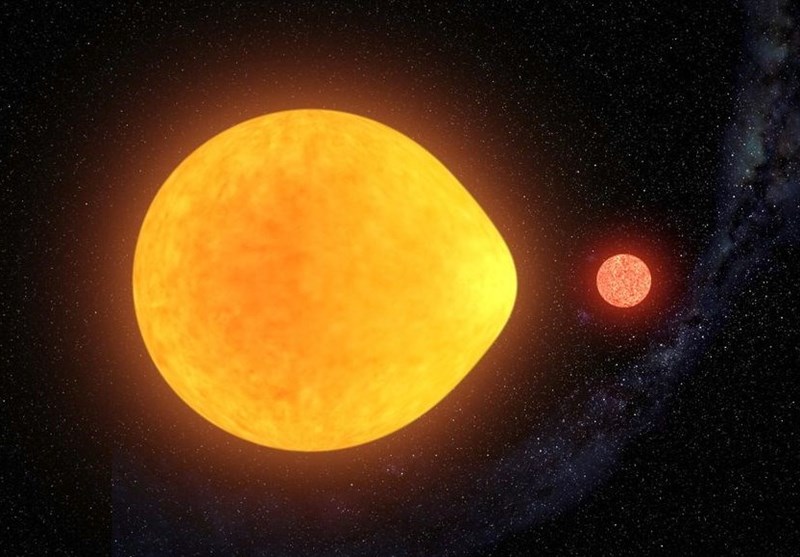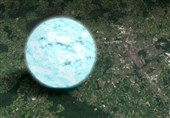First of Kind ‘Teardrop’ Star Discovered That Pulsates on One Side
TEHRAN (Tasnim) – A never-before-seen star that is tear-shaped and pulsates on just one side has been discovered by astronomers.
The star, named HD74423, sits 1,500 light-years away and is part of a binary system with a red dwarf, which researchers say is the cause of the warped shape and unusual pulsations.
Scientists recently discovered this very unusual star, and they say it's the first of its kind, CBS reported.
The star, called HD74423, was discovered in the Milky Way galaxy thanks to the collaboration of astronomers around the world. The scientists published their findings this week in the journal Nature Astronomy.
"What first caught my attention was the fact it was a chemically peculiar star," co-author Dr. Simon Murphy, from the Sydney Institute for Astronomy in Australia, said in a press release. "Stars like this are usually fairly rich with metals — but this is metal-poor, making it a rare type of hot star."
Many stars — including our own sun — are known to pulsate rhythmically. These pulses can vary in duration, strength and cause.
However, until now, all pulsations studied have been visible on all sides of a star. HD74423's oscillations occur on just one hemisphere.
"We've known theoretically that stars like this should exist since the 1980s," said co-author Professor Don Kurtz, from the University of Central Lancashire in Britain. But they hadn't actually come across one until now.
Scientists also identified the cause of the peculiar one-sided pulsations. The star is located in a binary star system with a red dwarf, which distorts the oscillations due to its gravitational pull.
Not only is the red dwarf causing strange pulsations, it is also distorting the shape of the star. The companion's gravitational pull shaped the star into resembling a teardrop due to its short orbital period of fewer than two days.
"I've been looking for a star like this for nearly 40 years and now we have finally found one," said Kurtz, who is the inaugural Hunstead Distinguished Visitor at the University of Sydney.
Amateur astronomers first came across the star after digging through the trove of data from NASA's planet-hunting TESS satellite. Experts say they expect to find many more similar stars as technology improves.
"We expect to find many more hidden in the TESS data," said co-author Professor Saul Rappaport from the Massachusetts Institute of Technology.






